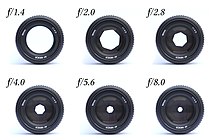Month: September 2022
Astromod old DLSR without any replacement filter?
https://www.cloudynights.com/topic/754376-astromod-old-dlsr-without-any-replacement-filter/
Louis Jordan
The Code Breaker: Jennifer Doudna, Gene Editing, and the Future of the Human Race: Isaacson, Walter
https://www.amazon.com/Code-Breaker-Jennifer-Doudna-Editing/dp/1982115858
Gluon
There are eight remaining independent color states, which correspond to the “eight types” or “eight colors” of gluons. Because states can be mixed together as discussed above, there are many ways of presenting these states, which are known as the “color octet”. One commonly used list is:[8]{\displaystyle (r{\bar {b}}+b{\bar {r}})/{\sqrt {2}}}






These are equivalent to the Gell-Mann matrices. The critical feature of these particular eight states is that they are linearly independent, and also independent of the singlet state, hence 32 − 1 or 23. There is no way to add any combination of these states to produce any other, and it is also impossible to add them to make rr, gg, or bb[9] the forbidden singlet state. There are many other possible choices, but all are mathematically equivalent, at least equally complicated, and give the same physical results.
Existential Physics: A Scientist’s Guide to Life’s Biggest Questions: Hossenfelder, Sabine
https://www.amazon.com/Existential-Physics-Scientists-Biggest-Questions/dp/1984879456
Oak Bolete
Kodi CUE files tracklist
Stopping down

Increasing f-stop decreases the aperture of a lens
In photography, stopping down refers to increasing the numerical f-stop number (for example, going from f/2 to f/4), which decreases the size (diameter) of the aperture of a lens, resulting in reducing the amount of light entering the iris of a lens.[1][2]: 112
Reducing the aperture size increases the depth of field of the image. In the case of film cameras, this allows less light to reach the film plane – to achieve the same exposure after stopping down, it is necessary to compensate for the reduced light by either increasing the exposure time, or using a photographic film with a higher speed. In the case of digital cameras, stopping down the aperture allows less light to reach the image sensor – to achieve the same exposure, it is necessary to compensate for the reduced light by either increasing the exposure time, or increasing the signal gain of the sensor by increasing the camera’s ISO setting. Alternatively, more light can be added to the scene by increasing the amount of light illuminating the scene, such as by using or increasing the strength of electronic flash or other light sources.[3]
As a lens is stopped down from its maximum (widest) aperture, most lens aberrations (spherical aberration, coma and astigmatism) are decreased, but lens diffraction increases. The effect is that for most lenses, the balance between the decreasing aberrations and the increasing diffraction effects of stopping down the lens means that lenses have an optimum aperture for best results, often about three stops closed down from maximum aperture, so for a lens with a maximum aperture of ƒ/2.8, ƒ/8 would be the optimum aperture.[2]: 180
Creality Ender 3 V2 vs Ender 3 (Pro): The Differences
https://all3dp.com/1/creality-ender-3-pro-vs-ender-3-v2-the-differences/
A Beautiful Question: Finding Nature’s Deep
https://www.amazon.com/Beautiful-Question-Finding-Natures-Design/dp/0143109367
How to Freeze Fresh Cherries – With or Without the Pit
https://hockadayorchards.com/recipes/how-to-freeze-cherries/
